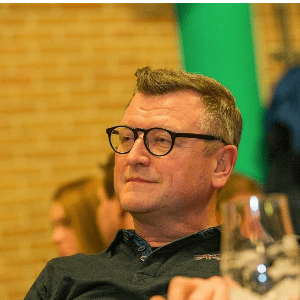Daikin unveils the 4-step plan to transform residential heating and cooling for a greener Europe. The goal is to decrease CO2 emissions from residential buildings by raising the share of renewable heating and cooling systems to 40% by 2030.
This is in line with the raised goal of cutting CO2 emissions from 40% to 55% by 2030, as signed in the European Climate Law on April 21.
Renewable heating systems
The majority of residential housing is still heated with outdated systems, often using polluting fossil fuels such as coal and oil. As of today, the European building stock is responsible for approximately 36% of all CO2 emissions in the EU.
In some European countries, renewable heating via heat pumps has become the new standard in new builds, while the potential they offer calls for more exposure in replacement. This observation contrasts sharply with the raised EU goal of CO2 emission cuts from 40% to 55 % by 2030 in the recently signed European Climate Law.
Patrick Crombez, General Manager Heating, and Renewables at Daikin: “A clear and accessible strategy for decarbonizing residential heat is needed and renewable technologies are playing an essential role in achieving the new targets, especially in the replacement market. Daikin has adopted the ambitious new targets and takes the lead with a 4-step guide to transform residential heating.”
The 4 steps
The founding step of this new plan is to strengthen new build rules on energy use
The founding step of this new plan is to strengthen new build rules on energy use. Daikin estimates that heat pumps already have up to 50% market share in new (single family) houses across Europe. Reinforcement of the current rules must therefore be put in place, to make heat pumps the standard.
The second step is to increase the replacement rate. In order to achieve the objectives of the European Climate Law, the replacement rate must double from 1% to 2% by 2030. By increasing the replacement rate, old systems are being replaced by more energy-efficient ones, leading naturally to emission cuts.
The next challenge is therefore to motivate EU citizens to choose renewable solutions. This involves the need to explain on a wider scale that renewable heating systems, like heat pumps, are an efficient, cost-effective, and established solution.
Fossil fuel incentives
The third step consists of ending fossil fuel incentives. Policymakers should avoid incentives for fossil fuels. Currently, direct or indirect incentives benefit oil or gas-based boilers over heat pumps. They are made cheaper and more accessible, and that’s why renewable technologies also need a level playing field. The gap between today’s electricity and gas prices in many member states is too high to make heat pumps accessible for all EU citizens.
The final step is to make renewable heating the standard in replacement. Daikin believes that heat pumps are the best solution. Indeed, they are increasingly capable of high efficiencies even at lower outdoor temperatures.
They are therefore fit for any type of house or apartment. Using renewable energy sources to heat your home reduces the consumption of polluting fossil fuels and CO2 emissions.
Clear actions are needed
Daikin has set itself the ambition to become a carbon-neutral company by 2050
Daikin has set itself the ambition to become a carbon-neutral company on a global scale by 2050. These four steps are today the most effective method of decarbonizing residential heat and Daikin calls on all stakeholders to roll up their sleeves and join the movement.
As an industry leader in sustainable heating, Daikin is showing the way. “At Daikin we’re working on a daily basis to help making these 4 steps reality. Technology is in place, our investments support this. We are making sure our installer community is joining the movement.”
“Heat pumps are the future in the replacement market and it is our duty to convince all stakeholders. All the signs are indicating that we need to act now. Words are no longer enough; clear actions are needed. This is the only way we can make Europe climate neutral by 2050,” concludes Patrick Crombez.

















